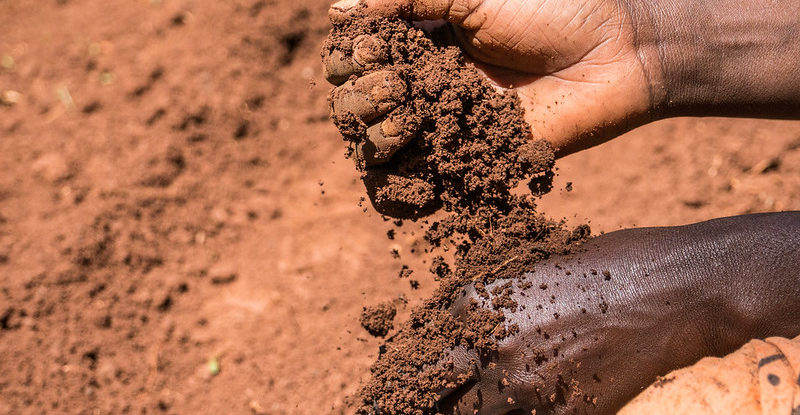
With the population in sub-Saharan Africa projected to more than double, growing by 1.05 billion people by 2050, pressures on the landscape could lead to wide-ranging environmental, socioeconomic and geopolitical upheaval.
One response to the many challenges faced by humanity — both on the African continent and globally — involves taking a nested approach that integrates sustainable agriculture, climate response, youth, gender and land rights into soil organic carbon sequestration projects for small-scale farmers.
During a session led by TMG Think Tank for Sustainability titled Soils as keystone for food security and ecosystem restoration at the recent Global Landscapes Forum (GLF) digital conference in Bonn, Germany, delegates took a deep dive into the topic.
A discussion focused on how smallholder farming communities can benefit from carbon sequestration projects did exactly that, while also reflecting on how farmers can be rewarded and recognized for restoration activities.
The conversation was facilitated by TMG Think Tank’s Sarah D’haen. Her portfolio at TMG — which works on sustainability issues related to nutrition, climate and energy — involves overseeing a project that explores how digital and social innovations can foster concrete solutions for the food security of smallholder farming communities in sub-Saharan Africa.
“Investing in community-based projects and an integrated approach is key,” said Amos Wekesa environment and climate change advisor with Vi Agroforestry, drawing on his role in the Kenya Agricultural Carbon Project (KACP)
Amy Duchelle, a senior scientist in the Climate Change, Energy & Low Carbon Development Team at the Center for International Forestry Research (CIFOR), emphasized that soil carbon sequestration projects could learn from over a decade of experimentation with REDD+ (Reducing Emissions caused by deforestation and forest Degradation) at multiple scales.
“From a CIFOR assessment of local REDD+ initiatives globally, it is clear that ensuring real incentives for farmers helps improve results,” she said.
In Kenya, this has been realized through funding KACP’s soil restoration activities as part of Africa’s first carbon project for land and agriculture. Using the nested model, smallholders can earn income while supporting climate change, ecosystem and food security goals.
“Sustainable land management can improve soil health,” said Leigh Winowiecki, a soil systems scientist at World Agroforestry (ICRAF). She also noted its importance for the U.N. Decade on Ecosystem Restoration, which calls for restoring at least 350 million hectares of degraded landscapes by 2030.
To help achieve this goal, there needs to be strong commitment from farmers, development and research organizations, private sector and government to work together to implement locally relevant restoration options, Winowiecki said, citing the work being implemented in the Regreening Africa project and a project funded by the International Fund for Agricultural Development and the European Union on scaling restoration in sub-Saharan Africa.
There is also a real need for consistent monitoring of ecosystems to track changes over time and to support national reporting requirements, she said.
For example, ICRAF hosts the largest geo-referenced database of ecosystem health indicators, collected with the systematic framework called the Land Degradation Surveillance Framework (LDSF), which operates across 43 countries in the global tropics.
By combining systematically collected field data with remote sensing data, we are able to produce accurate maps of key soil and health indicators — including soil organic carbon and soil erosion prevalence — at a scale relevant to land managers.
“This is absolutely key for tracking the impact of restoration activities on ecosystem health,” Winowiecki said.
Violet Shivutse, founder and coordinator of Shibuye Community Health Workers, also based in western Kenya, said: “Property rights and land rights are very important. There must be locally adapted solutions so women are not thrown off their farms.”
Susan Chomba, project manager for Regreening Africa at CIFOR-ICRAF, in the opening session on soils and the U.N. Decade on Ecosystem Restoration, added: “There is a need to create new social contracts at the restoration level and on the ground.”
Others weighed in with various perspectives.
“Scaling up, you need to make the projects bring down the economic costs and enable farmers to be community facilitators,” said Bruno St. Jacques, co-facilitator from TMG Think Tank.
Remedies are available for some of these issues, including developing affordable carbon project certification and verification systems for smallholder farmers.
By taking these steps, participants in the GLF discussion said, global efforts to fight climate change and improve outcomes for landscapes and the world’s most vulnerable communities, currently facing severe food security due in part to the current pandemic, can be better realized.
“This is absolutely key to achieving climate, restoration and development goals,” Winowiecki said.
We want you to share Forests News content, which is licensed under Creative Commons Attribution-NonCommercial-ShareAlike 4.0 International (CC BY-NC-SA 4.0). This means you are free to redistribute our material for non-commercial purposes. All we ask is that you give Forests News appropriate credit and link to the original Forests News content, indicate if changes were made, and distribute your contributions under the same Creative Commons license. You must notify Forests News if you repost, reprint or reuse our materials by contacting forestsnews@cifor-icraf.org.